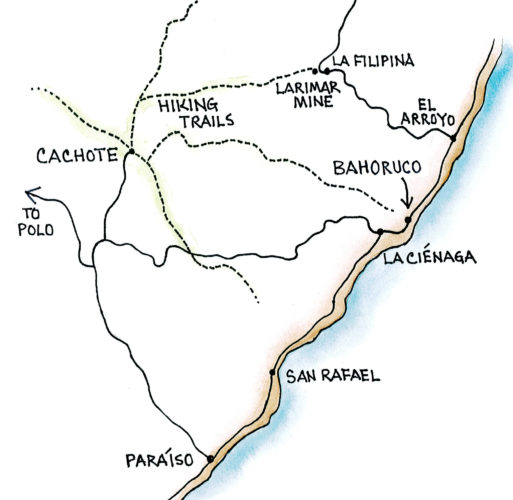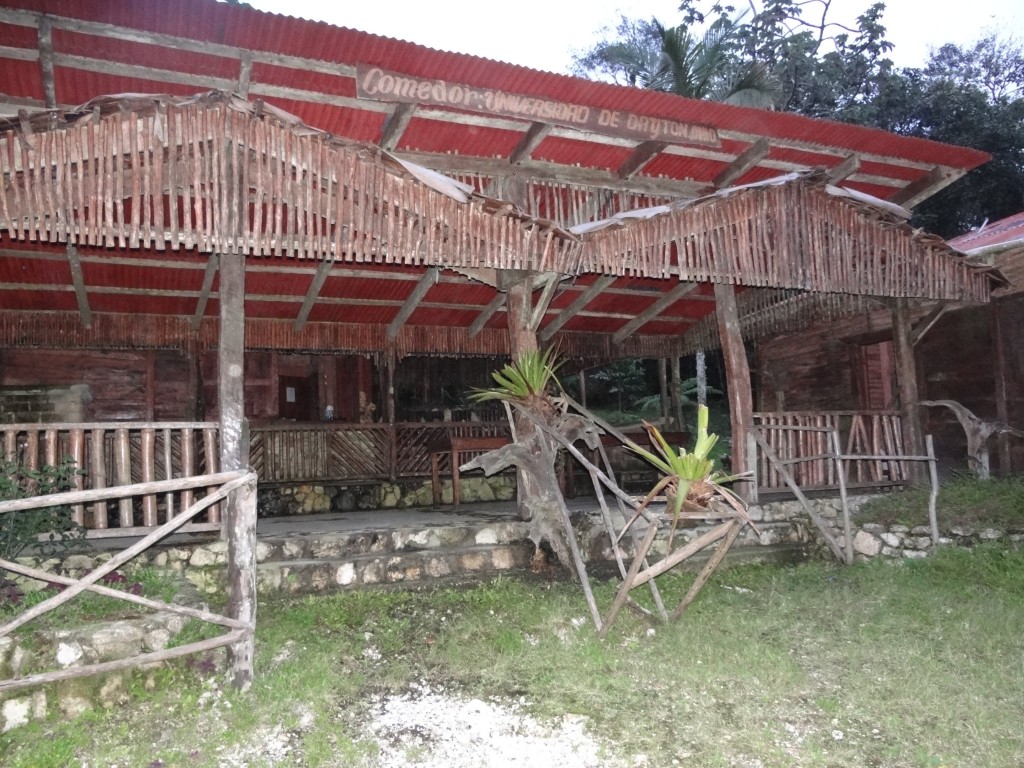Cachote, Eastern Bahoruco
Cachote is at the eastern end of the Sierra de Bahoruco (or Bahoruco Oriental), and is part of the 2,964 ha Padre Miguel Domingo Fuerte Natural Monument. The landscape is a mosaic of primary forest, including one of Hispaniola’s only magnolia (or ebano verde sp. hammerii) forests, and the largest forest of the endemic manacle palm. This is rural, montane Dominican countryside at its best and most authentic, with beautiful forests, friendly people, and unique wildlife.
The high elevation cloud forest sites contain the only known population of the Eastern Chat-Tanager south of the Enriquillo Basin, a biological puzzle that has yet to be fully explained. Other species typical of the moist broadleaf forests are also readily found here. The surrounding shade coffee and citrus plantations host a wide variety of other bird species, including large numbers of over-wintering Neotropical migrants, in season, including the Bicknell’s Thrush.
Conservation in the area benefits from the active involvement of the Microempresa Ecoturística de Cachote, a locally-based ecotourism initiative run by a small group of families in the tiny town. With shared cabins, camping, a restaurant, and guided hikes available, the site is fun and welcoming to the international traveller and to students as long as you are happy with the typical lifestyle and food of the Dominican countryside.

At Cachote there is a 1-hour interpretive trail, La Jibijoa, as well as six longer trails of 3-6 hours duration. Some of the best birding may be done along the road at Cachote. The Eastern Chat-Tanager is best seen at the lower entrance to the center. A few yards back down the road there is a very narrow unmarked trail that leads into the forest below the corner. This is a good place to look for Bicknell’s Thrush. For those interested in a longer hike that includes social and cultural aspects, Cachote offers trails that pass over mountains, and through neighboring villages, river valleys, cloud forests, and coffee plantations.
Target species include Scaly- naped Pigeon, Plain Pigeon, White- fronted Quail- Dove, Hispaniolan Trogon, Golden Swallow, Rufous- throated Solitaire, Bicknell’s Thrush, La Selle Thrush, Eastern Chat- Tanager, Hispaniolan Spindalis, Antillean Euphonia, Antillean Siskin
Cachote may be accessed from either of the coastal towns of La Ciénaga or Paraíso. From the Barahona waterfront, take the scenic main road south and continue 15 km (9.3 mile) to the town of Ciénaga, or 25 km (15.5 miles) to the town of Paraíso. From either town you will then travel up the mountain on an unmarked and rough dirt road for approximately one hour. A 4WD vehicle is required here.

Cachote is a village situated in the cloud forest of Bahoruco Oriental where approximately 30 families live. The primary livelihood here is through agriculture (e.g., coffee), although the community is also interested in tourism. A local group called the Microempresa Ecoturistica de Cachote (Ecotourism Micro-enterprise of Cachote) manages cabins and a visitor center called the “Canto del Jilguero,” aptly named for the ubiquitous song of the Rufous-throated Solitaire heard here.
Adjacent to the visitor center is a common eating area where meals can be arranged with local cooks, and three cabins that will sleep up to 25 persons. There are also trails regularly maintained by the community, but good birdwatching can be had from the primary access road. This area supports populations of 26 (of the 34) Hispaniolan endemic birds.

For more information about the site and for making reservations, please contact the local tourism cluster of Barahona: call +(829) 471-1615 or visit: www.gobarahona.com.
